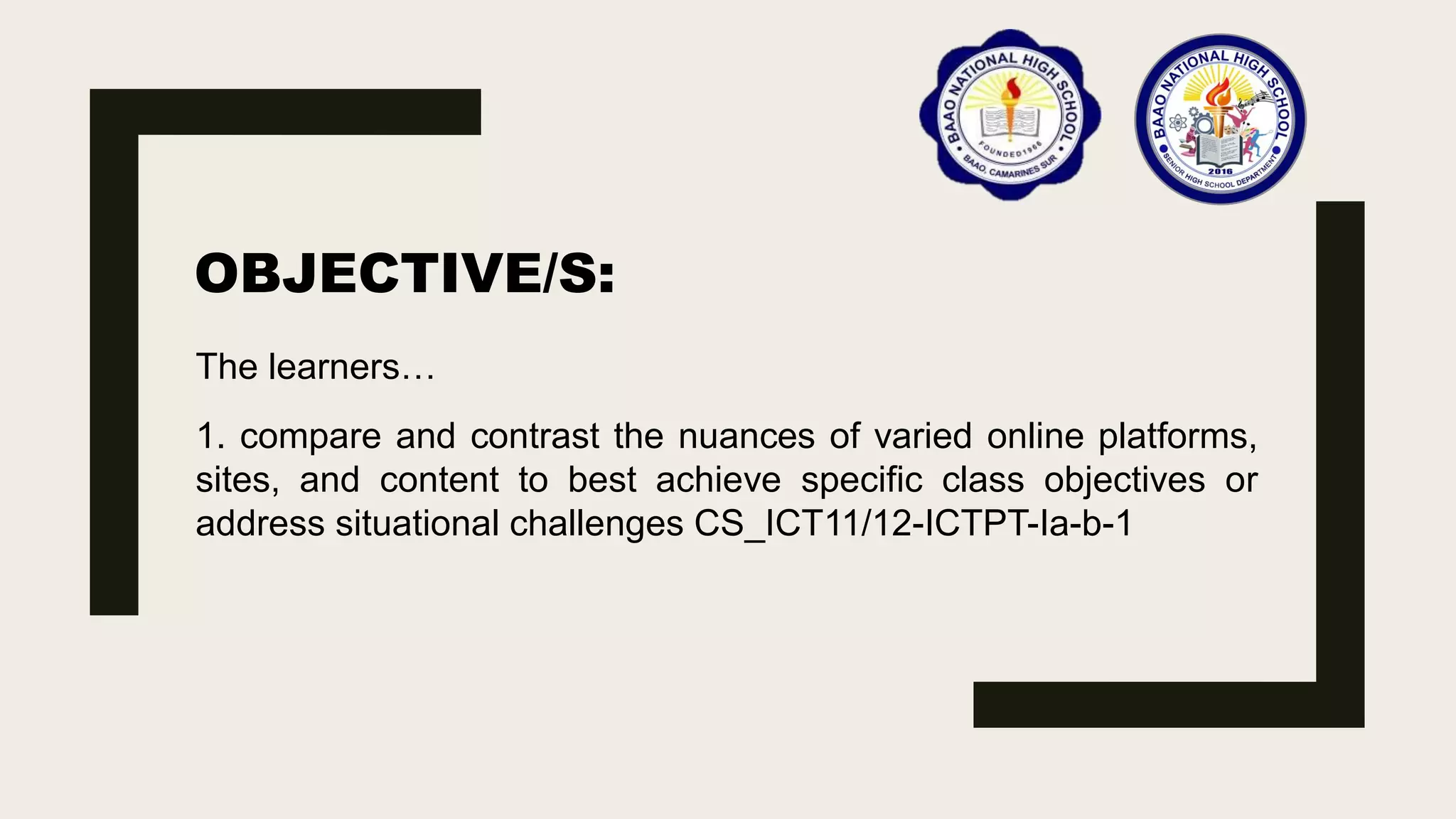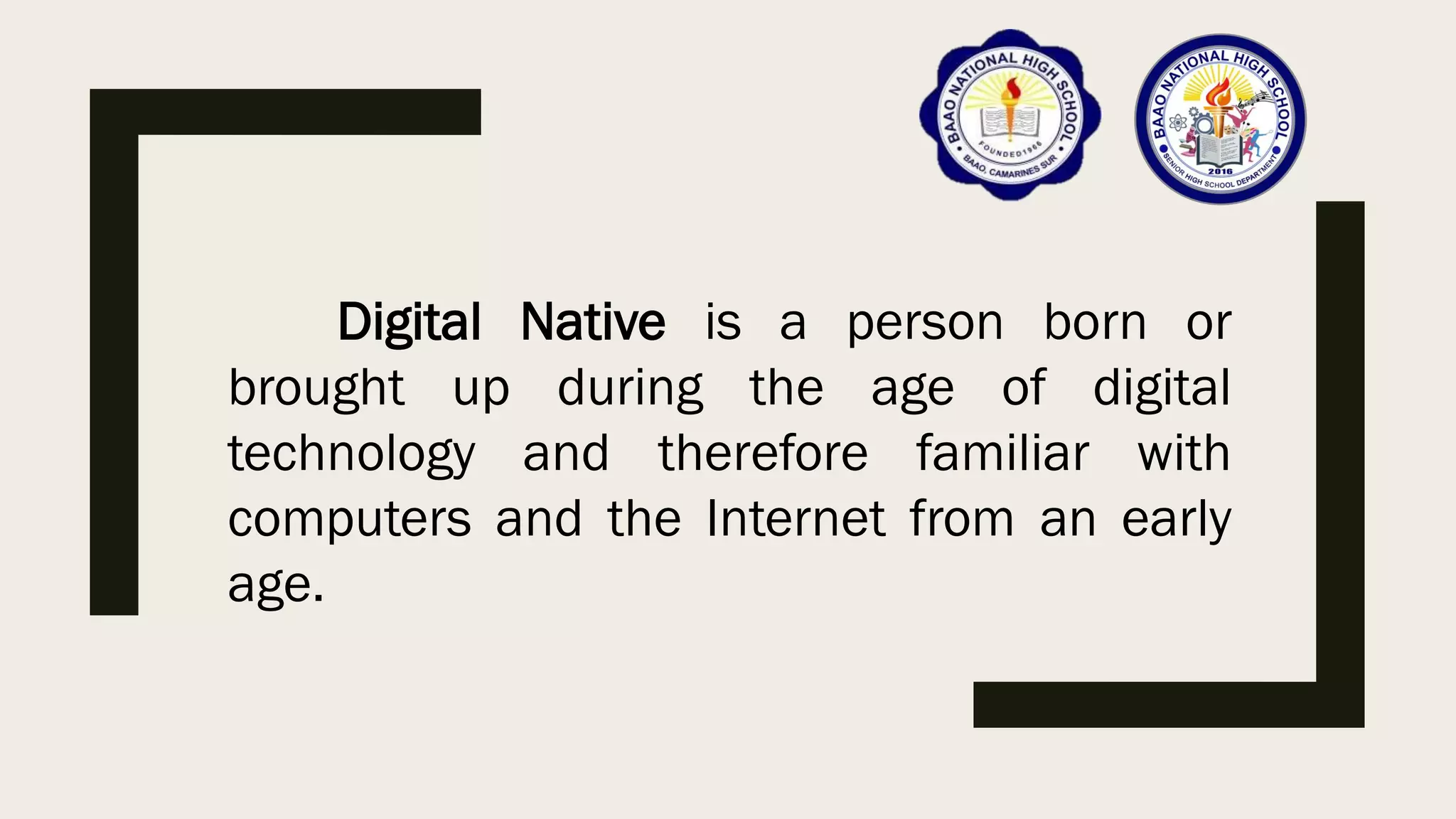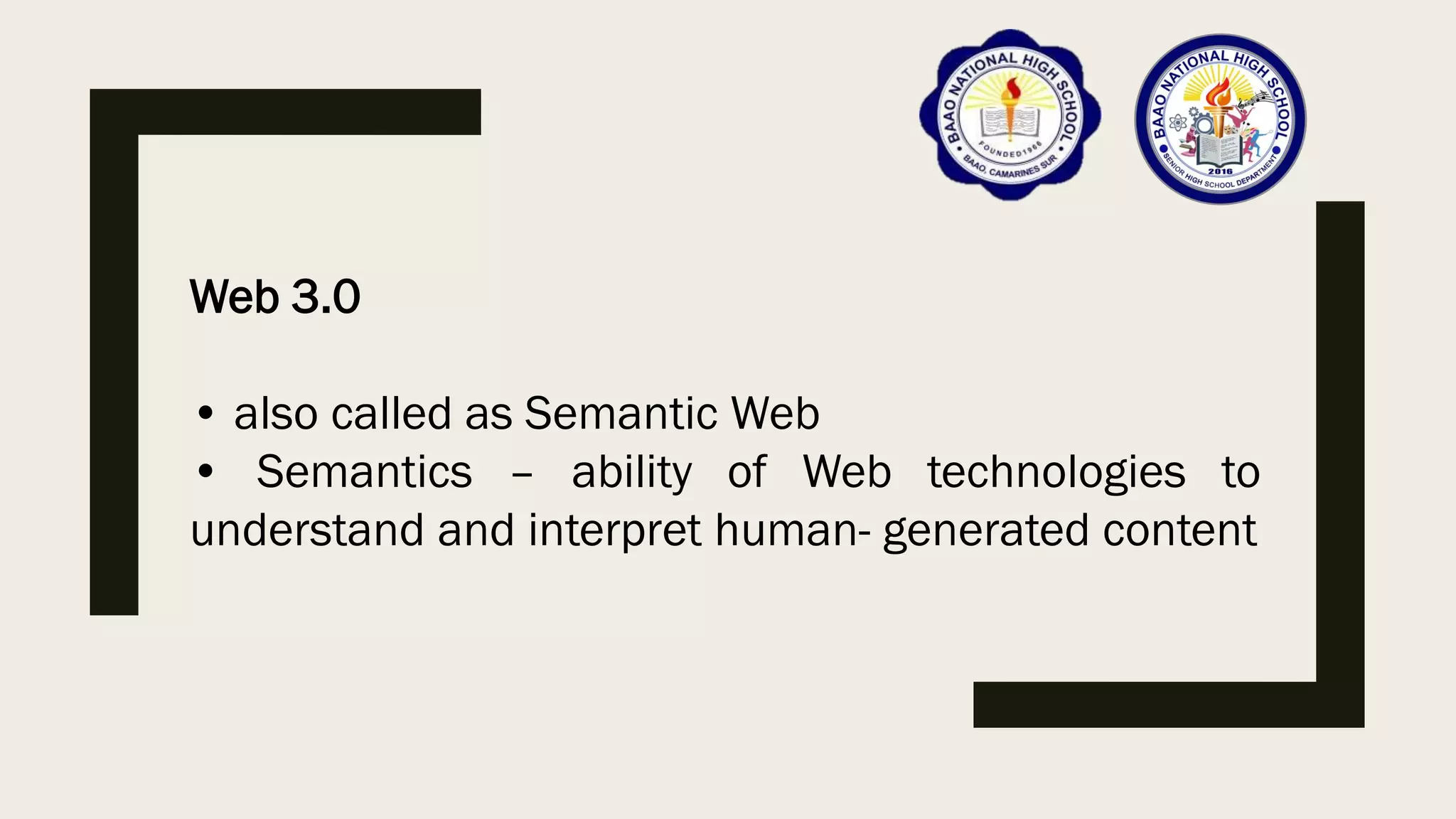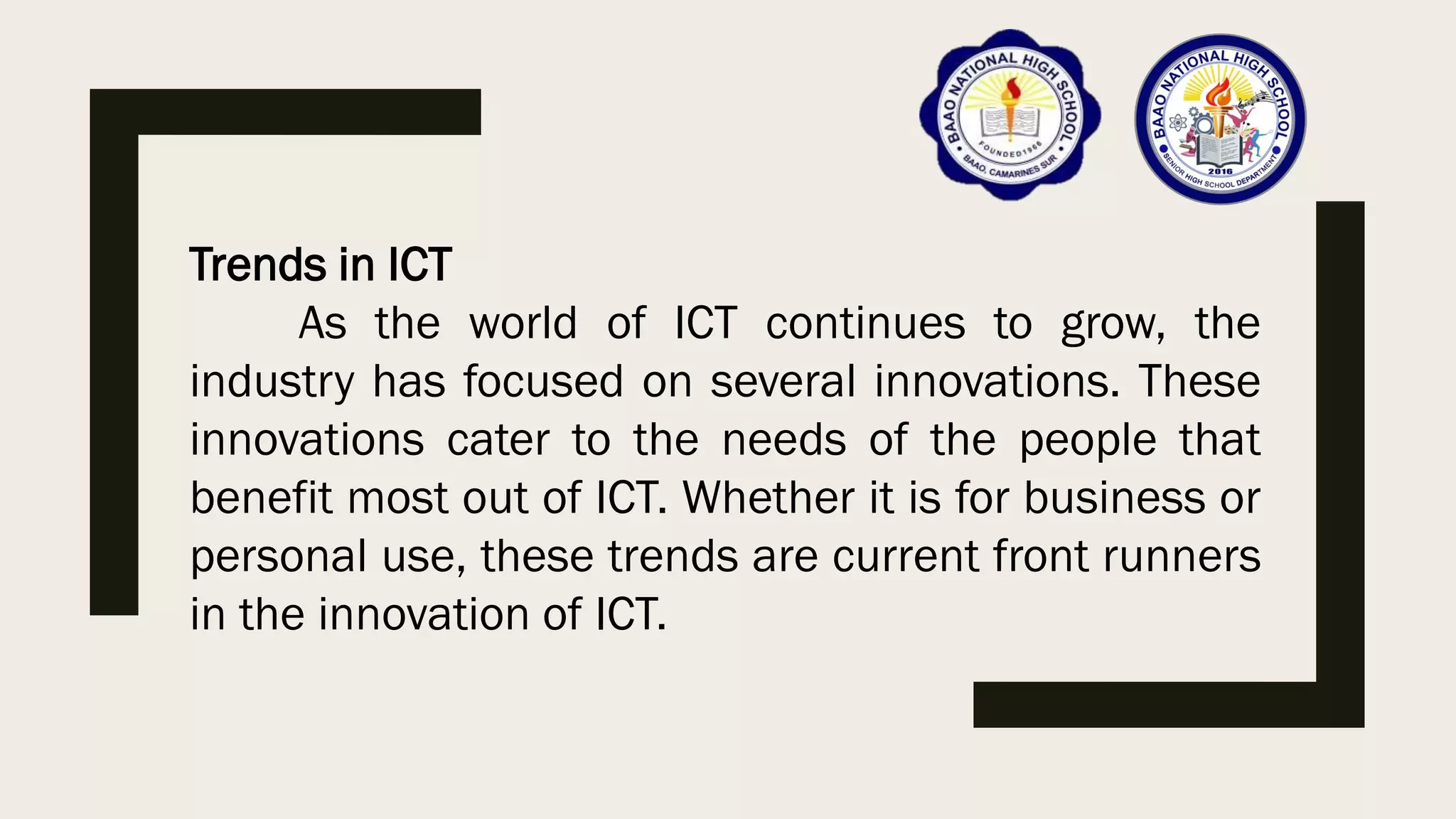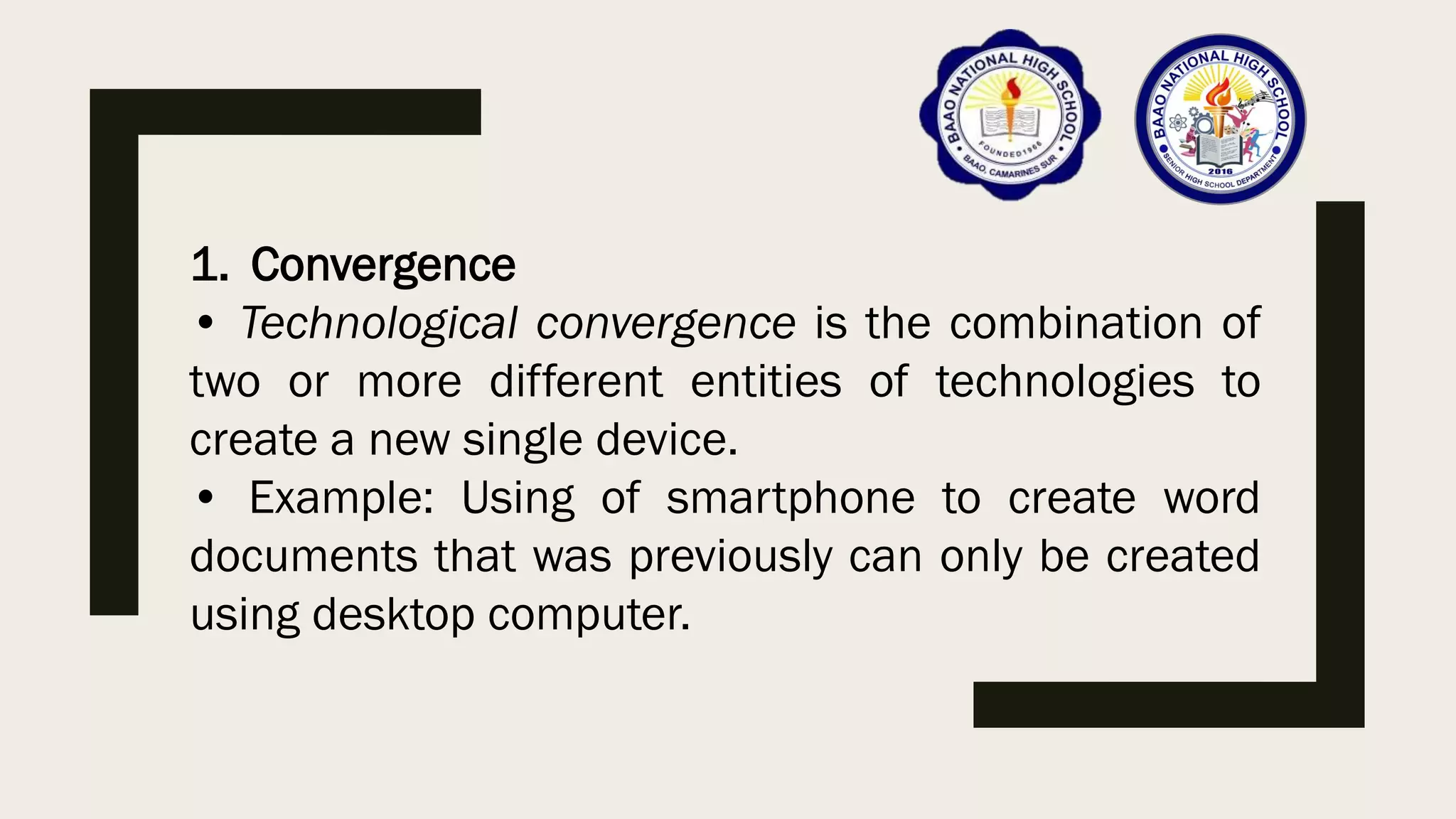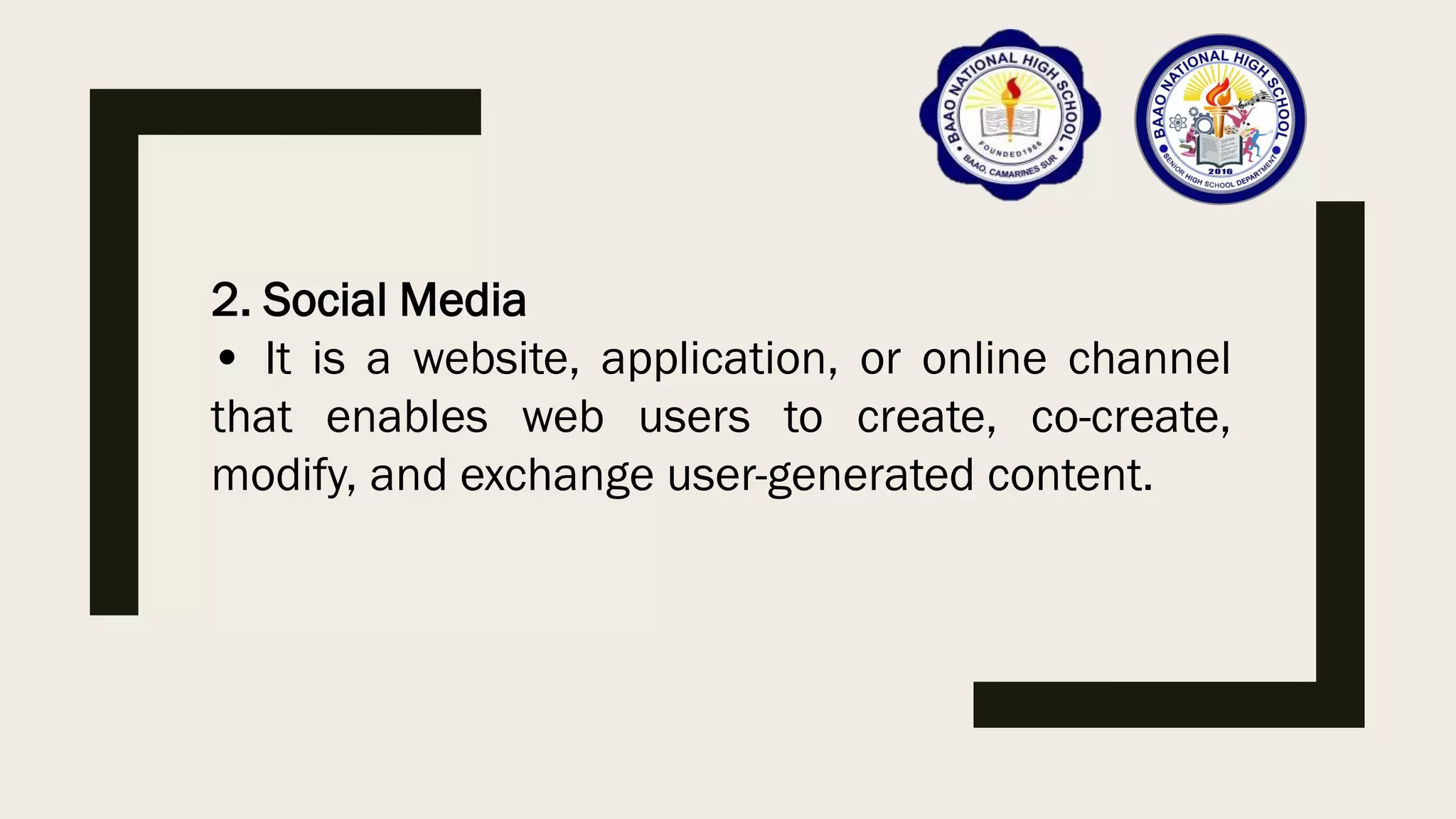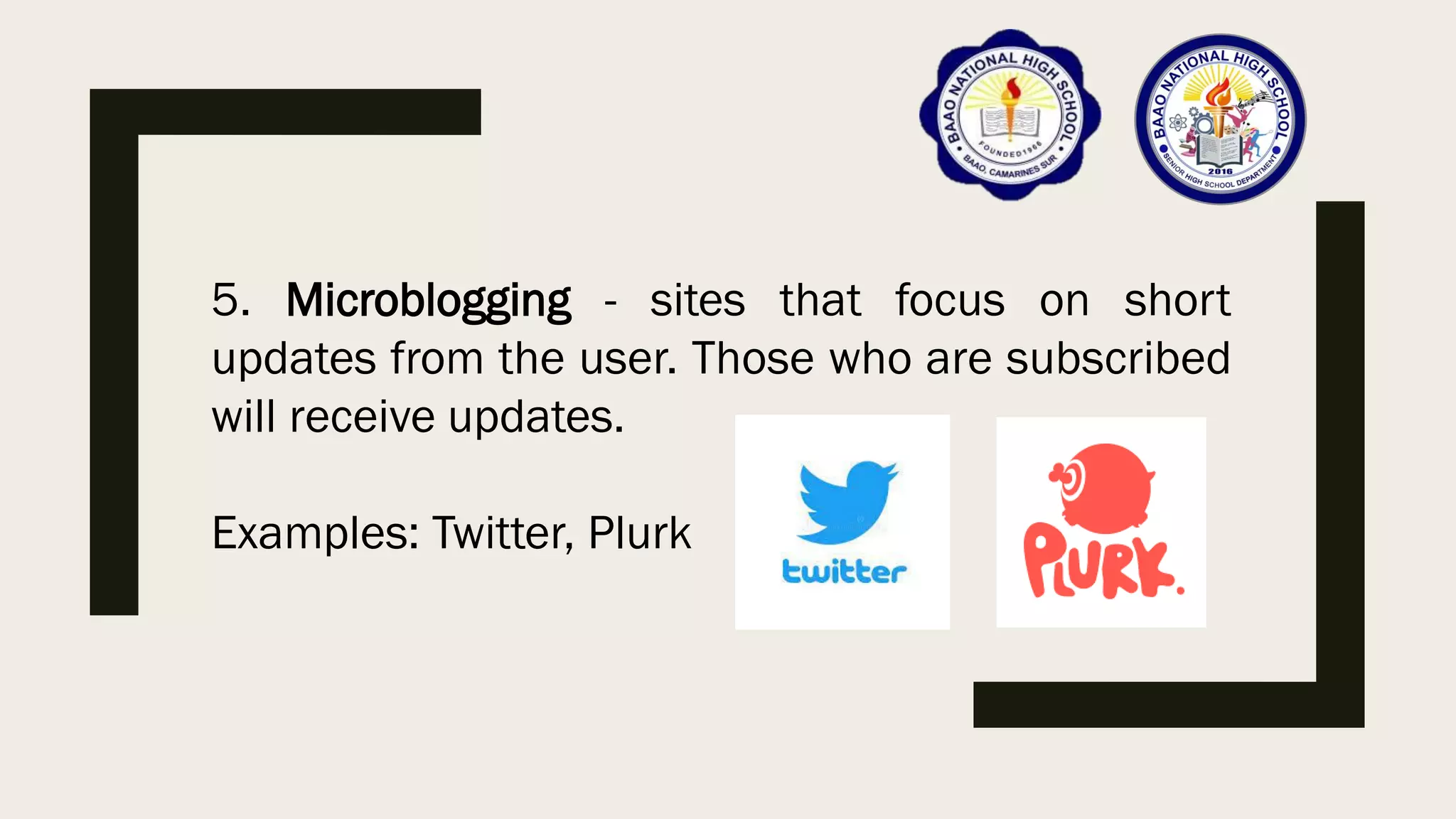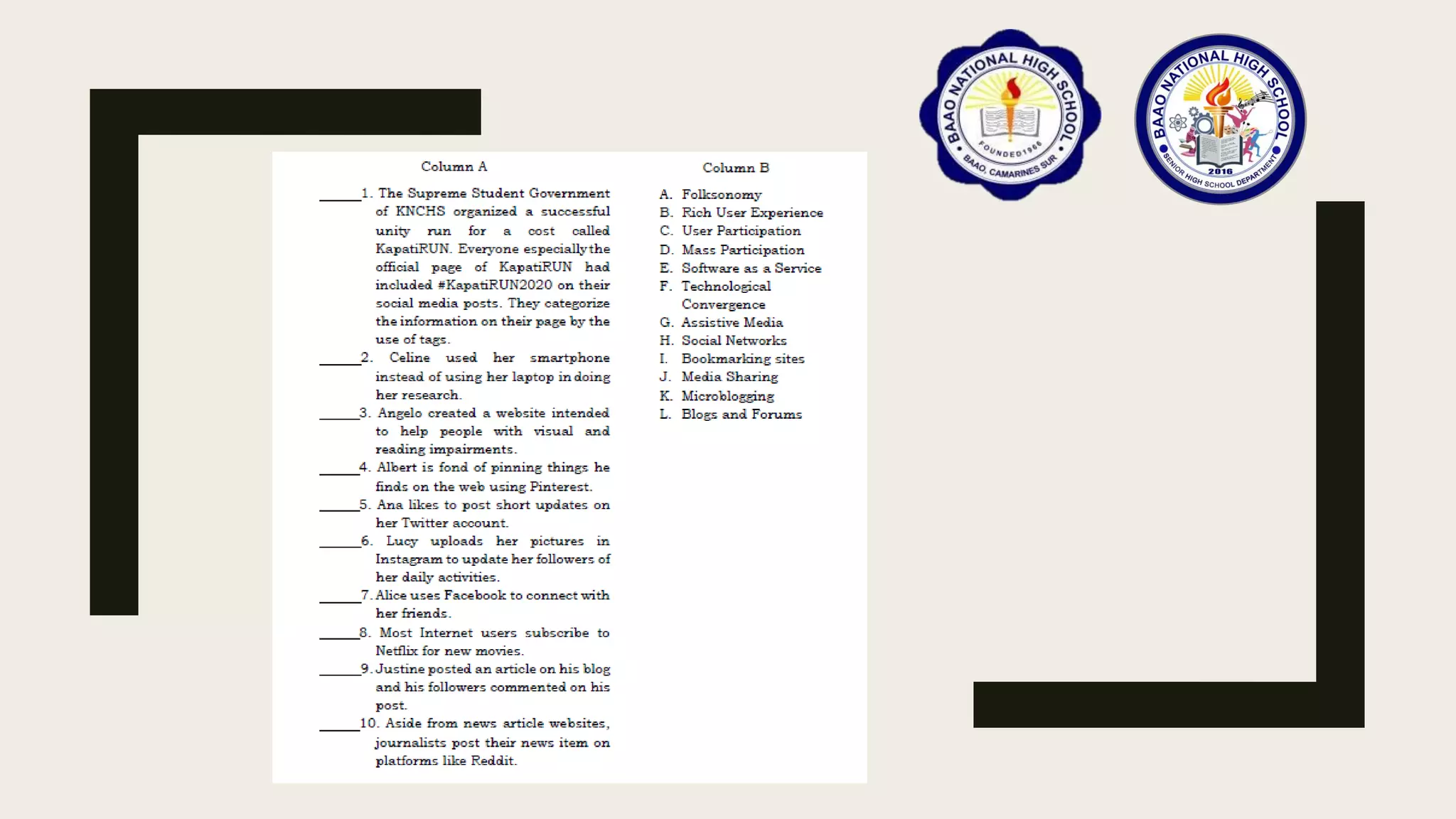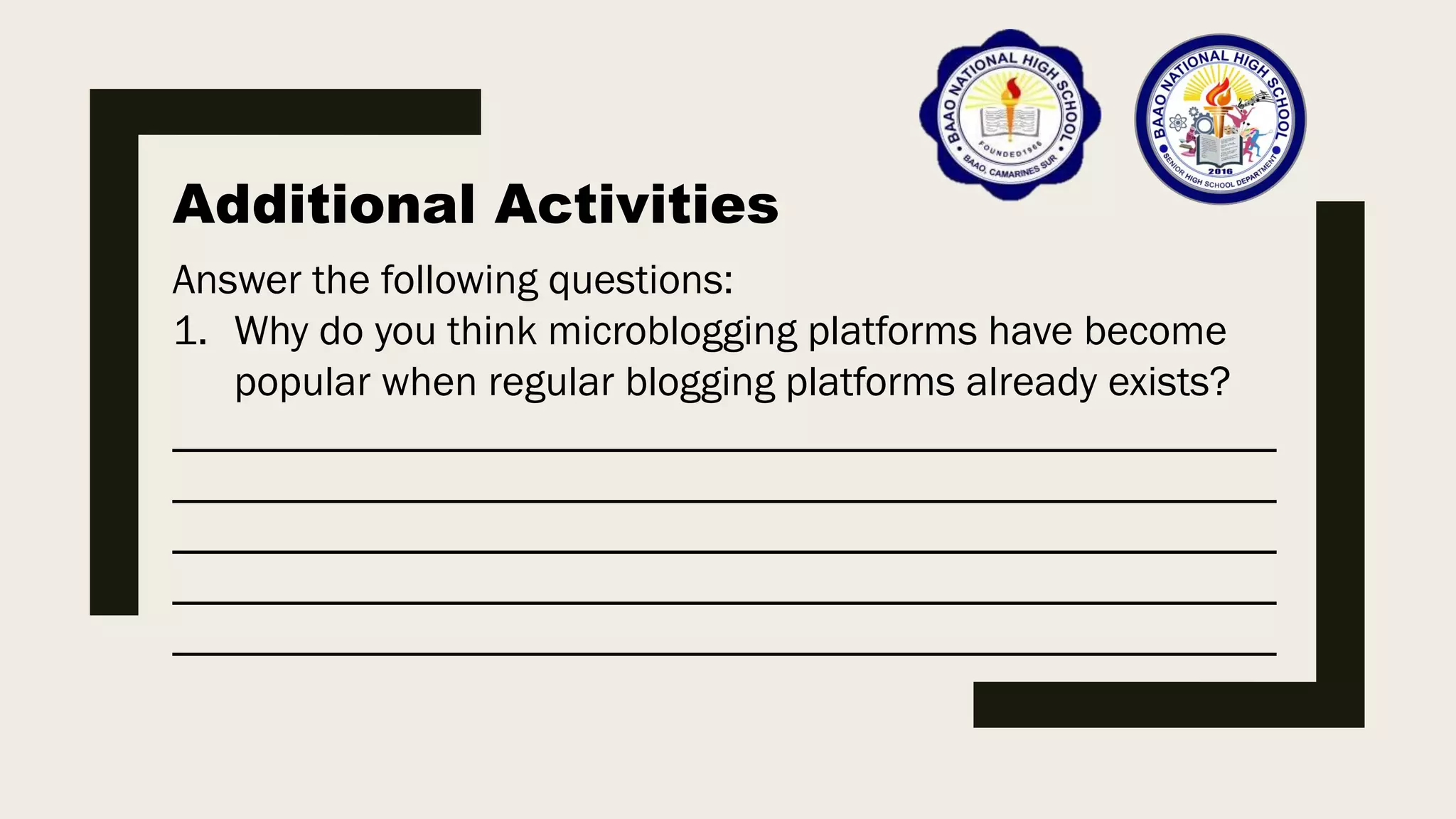1. The document discusses information and communication technologies (ICT), including the evolution of the World Wide Web from Web 1.0 to Web 2.0 to Web 3.0.
2. Key features of Web 2.0 are discussed, such as folksonomy, rich user experience, user participation, and mass participation.
3. Current trends in ICT are also summarized, including convergence, social media, mobile technologies, and assistive learning tools.

